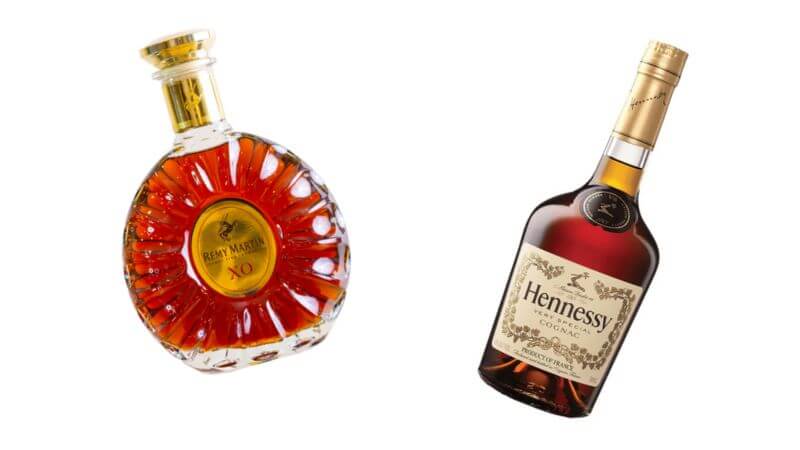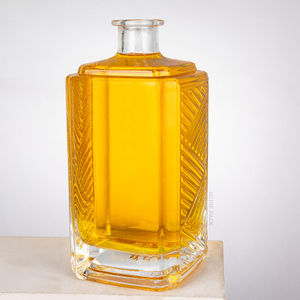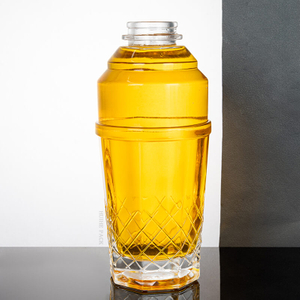Customized | Quality Control | Case | Blogs | Download | FAQ
Views: 0 Author: Site Editor Publish Time: 2025-09-16 Origin: Site
Brandy has a long history and is loved in many parts of the world. It began as a way to preserve wine, but over time it became a symbol of culture, luxury, and tradition. Today, brandy comes in many forms. Different regions use different grapes or fruits, and each place has its own methods of distilling and aging. This makes brandy a very diverse spirit.
But there is one challenge. Many brandy brands use common bottles and fail to stand out on the shelf. Beyond the drink itself, packaging plays a key role in how brandy is perceived on shelves and in bars. As a B2B glass packaging supplier, we will explore 11 classic types of brandy and share design insights that can help your product shine in the market.
This article contains the following brandy types:
Cognac
Armagnac
Spanish Brandy
American Brandy
Pisco
Metaxa
Calvados
South African Brandy
Slivovitz
Grappa
Fruit Brandies
Cognac is the most famous type of brandy. It comes from the Cognac region in France and follows strict rules of production. The main styles are VS, VSOP, and XO, which show how long the spirit has aged. Cognac is often linked with luxury and fine dining.
Because of this premium image, packaging plays a key role. Heavy glass bottles, sometimes weighing over 1,200g, are used to show quality and value. In 2025, many brands are also exploring Pantone's “Cognac Amber” shade for tinted bottles, which helps highlight the warm color of the spirit.

Armagnac is made in Gascony, France. It is older than Cognac and is known for a rustic, powerful taste. Unlike Cognac, many small producers make Armagnac in a traditional, artisanal way.
The bottle design often reflects this heritage. A sloped shoulder bottle with an embossed vineyard crest gives a strong link to tradition and craft. This kind of detail helps producers tell their story before the cork is even opened.

Spanish brandy comes mainly from Jerez, a region famous for sherry wines. It is aged using the solera method, which creates deep flavor and a touch of sweetness. This makes Spanish brandy popular both for sipping and for cocktails.
For packaging, many producers choose amber-tinted glass bottles. The color matches the look of sherry casks and helps customers connect the drink to its origin. With glass packaging, producers can keep a traditional image while still standing out on the shelf.

American brandy has grown fast in recent years, especially in California. It is often fruit-forward and lighter in style, appealing to a younger market. Many new brands use modern marketing and cocktail culture to promote it.
In the U.S. market, a tall and slender 750ml bottle is the common choice. At HUIHE, we provide FDA-certified flint glass bottles for this style. Clear glass allows the natural color of the spirit to shine, while the modern shape helps producers reach a fresh audience.

Pisco is a grape brandy made in Peru and Chile. It is clear, aromatic, and widely used in cocktails like the Pisco Sour. Its purity and freshness make it different from darker, aged brandies.
The right packaging highlights this clarity. A transparent flint glass bottle works best. Many producers also use custom embossing to show the grape varietal or region, giving the bottle a strong identity. For distributors, this creates both shelf impact and brand recognition.

Metaxa is a Greek spirit that mixes classic brandy with wine and herbs. It is smooth, slightly sweet, and very different from French or Spanish brandy. Many drinkers enjoy it as an easy sipper or in cocktails.
For brandy packaging, Metaxa often uses tall bottles with a slim neck to show elegance. Deep blue and gold labels highlight its Greek origin. A custom-shaped glass bottle helps reinforce its identity and set it apart from other classic brandy styles.

Calvados is an apple brandy from Normandy, France. It is made from cider apples and aged in oak casks. This gives it fresh fruit notes with layers of spice. It is popular after meals or as a pairing with dessert.
The packaging trend for Calvados leans toward rustic charm. Producers often use short, rounded bottles with natural corks to reflect the orchard heritage. Clear or lightly tinted glass bottles for brandy help show the golden apple color.

South African brandy is highly respected worldwide. It is made under strict rules, similar to Cognac, and has won many international awards. The style is smooth, fruity, and often enjoyed neat or with soda.
Packaging is key for export. Many brands use bold, modern designs to compete on global shelves. Heavy-base brandy bottles signal quality, while embossed logos add trust and recognition. For B2B buyers, consistent supply of premium glass packaging is essential.

Slivovitz is a plum brandy from Eastern Europe, especially Serbia, Croatia, and Czechia. It has a strong, distinctive taste and is often served at celebrations.
The bottle design usually reflects tradition. Many producers choose round or oval bottles with folk-style labels. A clear glass bottle allows the natural color of plum brandy to shine through. For distributors, unique packaging can help this niche classic brandy reach a wider audience.

Grappa is an Italian pomace brandy made from grape skins left after winemaking. It is aromatic, sometimes strong, and often served in small glasses after meals.
Because Grappa is linked to Italy’s wine culture, brandy packaging often highlights elegance and refinement. Tall, slim bottles with long necks are common. Clear flint glass shows purity, while custom embossing can feature the winery name or region. This helps producers strengthen their brand identity in a competitive market.

Beyond grapes, many regions produce fruit brandies from cherries, pears, apricots, and more. These spirits capture the natural aroma of the fruit and are popular both for sipping and in cocktails.
For packaging, clear glass bottles for brandy are the top choice. They let buyers see the natural color of the spirit. Some brands use unique shapes—pear-shaped or cherry-shaped bottles—to connect directly with the fruit. For B2B buyers, this opens opportunities to create memorable, eye-catching products on store shelves.

Each type of classic brandy tells a different story, and the bottle must match that story. A luxury Cognac often needs a heavy, elegant design, while a rustic Armagnac works better in a simple, traditional shape. Modern American brandy, on the other hand, may use tall and slim glass bottles to speak to younger markets.
Bottle design shapes the first impression of quality. A well-chosen form, color, or finish can make a mid-range spirit look premium, while a generic bottle may hide the value of even the finest brandy. This is why many producers and distributors invest in custom brandy packaging that reflects their brand image.
In the high-end market, demand goes beyond standard bottles. Thick bases that give weight in the hand, embossed crests that signal heritage, and special stoppers that suggest exclusivity are now common requests. These details help brandy stand out on the shelf and reinforce trust with buyers.

The global brandy market is growing steadily. In 2023, the market was valued around USD 14.37 billion, and it is projected to reach about USD 22.01 billion by 2031, with a CAGR (compound annual growth rate) of ~5.5%.
Emerging markets are making a big difference. Demand for premium brandy is rising in places like China and India, where consumers are increasingly interested in high-end spirits and mixology. This trend is pushing up exports (especially for Cognac and other French classic brandy styles)[1].
In more mature markets such as North America and Western Europe, growth is slower but the focus is very much on premiumization—consumers are willing to pay more for aged, branded, well-packaged spirits. Cognac remains a dominant share; for example, in 2024, Cognac led the brandy market by product type with 38.4% market share globally[2].
Another strong influence is sustainability. Across regions, buyers and regulators are pushing for environmentally responsible packaging. That means glass bottles that are recyclable, lighter (where feasible), or made with lower carbon footprint processes are becoming more attractive. This plays directly into how packaging (shape, finish, decorative elements) becomes a competitive advantage[3].
Trade policies also affect performance. For instance, anti-dumping duties and tariffs (notably China's tariffs on European brandy) are putting pressure on exports of Cognac and other French brandies. That means producers need to manage pricing, packaging cost, and supply chain carefully to stay competitive[4].

Glass bottles are the best choice for brandy packaging. They keep the flavor pure and protect the spirit from outside air or leakage. Unlike plastic or other materials, glass does not react with the liquid, which means every sip tastes as the producer intended. Glass is also fully recyclable, making it the most sustainable option for today’s market.
For branding, glass gives producers more freedom. Clear bottles let buyers see the natural color of a classic brandy, while tinted or decorated glass adds personality. With modern techniques, bottles can be shaped, embossed, or finished in ways that reflect tradition, luxury, or innovation. This flexibility makes glass a key tool in telling a brand’s story.
For B2B buyers, supply is just as important as design. A reliable packaging partner ensures consistent quality, large-volume production, and safe delivery across regions. This stability allows producers and distributors to focus on building their market without worrying about packaging shortages or delays.

Brandy is one of the most diverse spirits in the world, from French Cognac to South American Pisco and Eastern European Slivovitz. Each style has its own culture and flavor, but all of them rely on packaging to show their true value. The right bottle does more than hold liquid—it defines how a classic brandy is seen and remembered.
Whether you are a brandy producer, distributor, or private label, the right glass bottle can elevate your product on the market. At HUIHE PACK, we provide premium glass packaging solutions for brandy and other spirits. Contact us to discuss your custom or wholesale needs.
Q1: What are the most popular types of classic brandy?
A: The best-known types include Cognac, Armagnac, Spanish Brandy, American Brandy, Pisco, Metaxa, Calvados, South African Brandy, Slivovitz, Grappa, and Fruit Brandies.
Q2: Why does packaging matter for brandy producers and distributors?
A: Packaging shapes the first impression of quality. A unique glass bottle can highlight tradition, luxury, or innovation, helping a brandy stand out on shelves and in bars.
Q3: What makes glass bottles the best choice for brandy packaging?
A: Glass preserves flavor, prevents leakage, and is eco-friendly. It also offers more design options such as embossing, tinting, and custom shapes.
Q4: Can glass bottles be customized for different brandy styles?
A: Yes. Premium Cognac often uses heavy-base bottles, rustic Armagnac may use embossed crests, while modern American brandy looks good in tall, slender flint glass bottles.
Q5: How can B2B buyers benefit from working with a glass packaging supplier?
A: A reliable supplier ensures consistent quality, bulk supply, safe logistics, and professional design support for custom or wholesale brandy bottles.
Q6: Do eco-friendly glass bottles affect brand image?
A: Yes. Recyclable glass shows responsibility and appeals to modern consumers who value sustainability.
References
[1] Markets & Data. Global Brandy Market Overview, 2023–2031.
[2] Market.us. Brandy Market Share and Growth Trends, 2024.
[3] Bonafide Research. Global Brandy Market Outlook.
[4] AP News. China's tariffs on European brandy exports.









